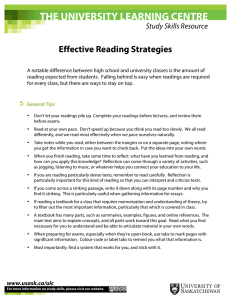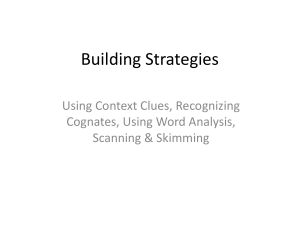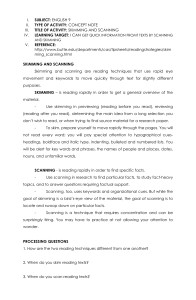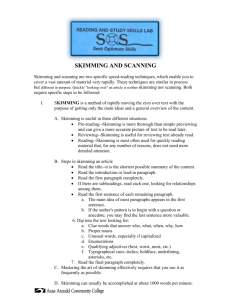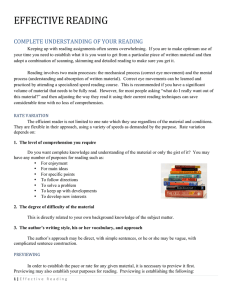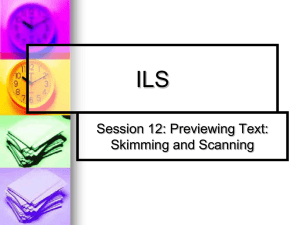SKIMMING AND SCANNING SCIENTIFIC MATERIAL
advertisement
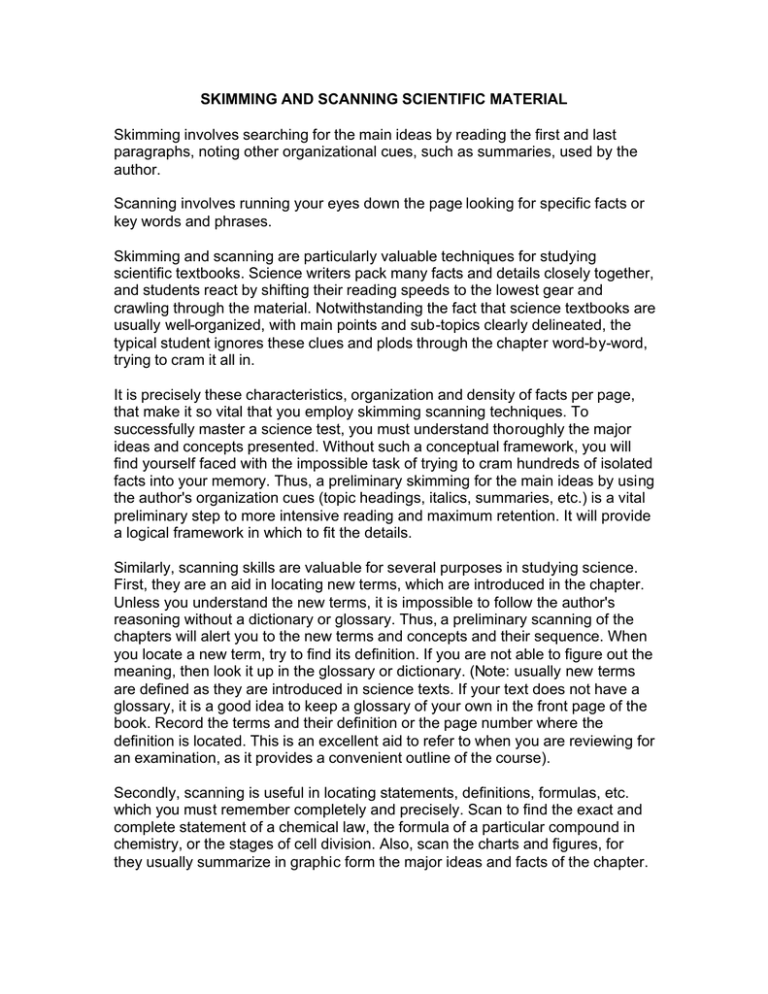
SKIMMING AND SCANNING SCIENTIFIC MATERIAL Skimming involves searching for the main ideas by reading the first and last paragraphs, noting other organizational cues, such as summaries, used by the author. Scanning involves running your eyes down the page looking for specific facts or key words and phrases. Skimming and scanning are particularly valuable techniques for studying scientific textbooks. Science writers pack many facts and details closely together, and students react by shifting their reading speeds to the lowest gear and crawling through the material. Notwithstanding the fact that science textbooks are usually well-organized, with main points and sub-topics clearly delineated, the typical student ignores these clues and plods through the chapter word-by-word, trying to cram it all in. It is precisely these characteristics, organization and density of facts per page, that make it so vital that you employ skimming scanning techniques. To successfully master a science test, you must understand thoroughly the major ideas and concepts presented. Without such a conceptual framework, you will find yourself faced with the impossible task of trying to cram hundreds of isolated facts into your memory. Thus, a preliminary skimming for the main ideas by using the author's organization cues (topic headings, italics, summaries, etc.) is a vital preliminary step to more intensive reading and maximum retention. It will provide a logical framework in which to fit the details. Similarly, scanning skills are valuable for several purposes in studying science. First, they are an aid in locating new terms, which are introduced in the chapter. Unless you understand the new terms, it is impossible to follow the author's reasoning without a dictionary or glossary. Thus, a preliminary scanning of the chapters will alert you to the new terms and concepts and their sequence. When you locate a new term, try to find its definition. If you are not able to figure out the meaning, then look it up in the glossary or dictionary. (Note: usually new terms are defined as they are introduced in science texts. If your text does not have a glossary, it is a good idea to keep a glossary of your own in the front page of the book. Record the terms and their definition or the page number where the definition is located. This is an excellent aid to refer to when you are reviewing for an examination, as it provides a convenient outline of the course). Secondly, scanning is useful in locating statements, definitions, formulas, etc. which you must remember completely and precisely. Scan to find the exact and complete statement of a chemical law, the formula of a particular compound in chemistry, or the stages of cell division. Also, scan the charts and figures, for they usually summarize in graphic form the major ideas and facts of the chapter. If you practice these skimming and scanning techniques prior to reading a science chapter, you will find that not only will your intensive reading take much less time, but that your retention of the importa nt course details will greatly improve.


